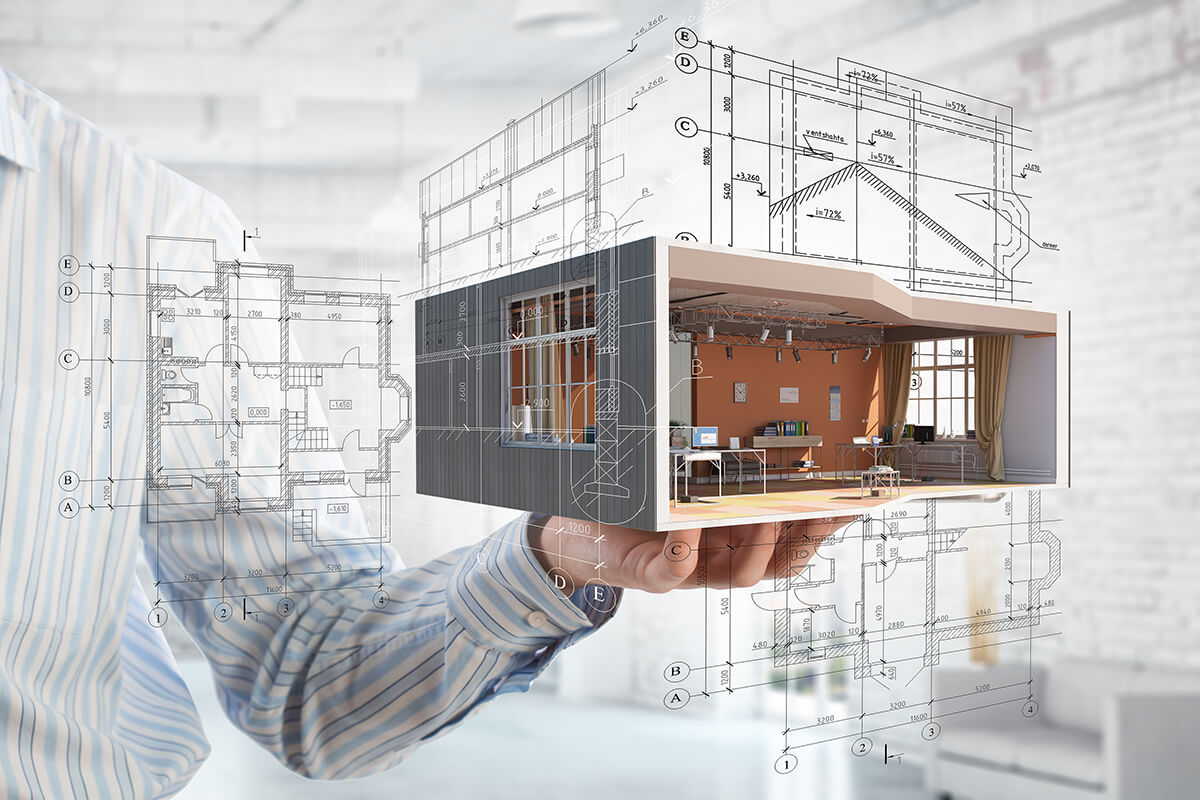Architect Workflow Improvement for More Efficient Project Delivery
Architect Workflow Improvement for More Efficient Project Delivery
Blog Article
Comprehending the Diverse Job Paths Available for Aspiring Architect
As an aspiring Architect, you have a globe of profession courses waiting for you. Each course offers one-of-a-kind challenges and possibilities to apply your imagination and technological know-how. Whether you're attracted to traditional design or the subtleties of sustainable style, there's a niche that lines up with your passions. Understanding these varied alternatives can shape your expert trip, but which direction will you select to discover first?
Typical Architecture: Designing Frameworks and structures
Standard design focuses on creating buildings and structures that blend functionality with visual allure. Your layouts can mirror social heritage, showcasing regional traditions while meeting modern-day requirements.
You'll establish skills in drafting, model-making, and site evaluation, permitting you to envision and connect your concepts properly. Involving with clients, you'll need to understand their vision and translate it right into viable styles.
Moreover, developing codes and sustainability methods are vital in your work, guaranteeing your structures are environmentally friendly and risk-free. As you expand in your job, you'll locate chances in property, commercial, and even remediation projects, each offering one-of-a-kind difficulties. Embracing traditional style leads the way for a satisfying career that admires the past while shaping the future.
Urban Preparation: Shaping Communities and Public Spaces
As a hopeful Architect, you can play an essential duty as an urban organizer, transforming just how communities operate and communicate. By using community involvement strategies, you'll ensure that residents have a voice fit their environment. Plus, incorporating sustainable style concepts will assist create areas that not just meet today's requirements yet also secure the future.
Role of Urban Planners
While lots of could think of designers as the single visionaries behind buildings, metropolitan organizers play a vital duty in shaping the wider landscape of neighborhoods and public spaces. They evaluate land use, zoning regulations, and community needs to produce sustainable atmospheres that enhance high quality of life. By working together with numerous stakeholders, you'll assist make parks, transportation systems, and suburbs that promote social interaction and ease of access. Urban coordinators also concentrate on environmental considerations, guaranteeing that developments integrate green spaces and support biodiversity. Your experience in spatial layout and community dynamics allows you to envision future growth while protecting cultural heritage. In this crucial role, you'll directly influence how individuals experience their environments, making every task a possibility for favorable modification.
Community Engagement Approaches
Effective community interaction approaches are vital for metropolitan coordinators to assure that the voices of homeowners are listened to and valued in the planning process. To foster significant dialogue, you must focus on open discussion forums and workshops where area participants can express their ideas and concerns. By actively incorporating and listening comments, you'll create areas that reflect the community's needs, ultimately leading to more lasting and effective city settings.
Lasting Design Concepts
When designing city areas, integrating sustainable layout principles is crucial for developing atmospheres that thrive both environmentally and socially. Think about integrating environment-friendly areas, like yards and parks, to improve biodiversity and improve air top quality.
Designing with water preservation in mind is likewise key-- consider rainfall gardens and absorptive surface areas to manage stormwater. Including community participants during the planning procedure assurances that the rooms you develop satisfy their demands and urge social communication. By welcoming these principles, you'll add to vivid, sustainable urban landscapes that benefit everyone.

Landscape Design: Creating Lasting Outdoor Settings
As you discover landscape style, you'll discover important layout principles that produce practical and stunning outside rooms. Lasting methods play a crucial role in ensuring these environments flourish while decreasing ecological impact. Plus, you'll find a range of profession possibilities that enable you to make a genuine distinction in how people engage with nature.
Design Principles in Landscape
Comprehending layout principles in landscape architecture is necessary for producing sustainable exterior environments that integrate with nature. You'll need to ponder elements like equilibrium, percentage, and scale to guarantee your styles feel natural and inviting. Integrating indigenous plants not just boosts biodiversity yet likewise minimizes water use, making your landscape resilient. Think of the circulation of space and how people communicate with it; paths and seating areas need to welcome exploration and relaxation. Additionally, take notice of seasonal adjustments, developing with materials that enhance the environments year-round (Architect). By focusing on sustainability and aesthetic appeals, you can create exterior rooms that improve the community and promote wellness. Welcoming these concepts will set a strong foundation for your occupation in landscape architecture.
Sustainable Practices Introduction
Sustainable practices in landscape architecture not just concentrate on aesthetics yet additionally prioritize ecological health and source conservation. By integrating indigenous plants, you improve biodiversity and decrease the need for chemical plant foods and pesticides. Executing efficient watering systems click to investigate assists conserve water and decreases overflow, safeguarding neighboring ecological communities. You can make areas that promote dirt health and wellness, such as using organic materials and exercising permaculture principles. In addition, integrating green framework, like rain yards and porous sidewalks, aids in stormwater monitoring and decreases city warm. You contribute to a healthier planet and give areas that promote area connection when you produce outdoor atmospheres with sustainability in mind. Inevitably, these practices ensure your layouts benefit both people and the setting for years to find.
Career Opportunities Exploration
With a strong foundation in lasting techniques, landscape style offers a variety of profession courses that enable you to make a purposeful effect on the setting. You can function as a landscape developer, creating aesthetically pleasing and functional outdoor spaces, or specialize in ecological remediation, assisting to restore damaged communities. Urban coordinators commonly work together with landscape designers to produce eco-friendly areas in metropolitan settings, improving city livability. If you're passionate about education, take into consideration coming to be a landscape style instructor, inspiring future generations. Furthermore, you may work with nonprofits concentrated on environmental sustainability or engage in research study to innovate new techniques. Each course not only shapes beautiful settings yet likewise fosters a much healthier world for future generations.
Sustainable Layout: Concentrating On Eco-Friendly Practices
As you explore your career in style, accepting eco-friendly techniques can set you apart in an affordable field. Lasting design concentrates on creating structures that minimize ecological influence while improving owner well-being. By including sustainable products, energy-efficient systems, and sustainable building strategies, you'll add to a greener future.
Beginning by acquiring expertise of eco-friendly qualifications like LEED or BREEAM, which can strengthen your credentials. Think about just how natural light, ventilation, and thermal effectiveness can maximize layout. Collaborate with engineers and ecological specialists to innovate remedies that lower waste and preserve sources.
Do not fail to remember the relevance of community involvement-- appealing regional stakeholders can influence layouts that integrate with the environment. As clients increasingly prioritize sustainability, your expertise in environment-friendly methods will certainly not just bring in projects but also fulfill your passion for responsible architecture. Embrace this essential element of the occupation, and view your profession thrive.
Historic Preservation: Safeguarding and Bring Back Cultural Heritage
While you commence on your architectural trip, take into consideration the crucial duty of historical conservation in preserving our social heritage. This field focuses on the protection and restoration of significant buildings, sites, and frameworks that inform the tales of our past. By taking part in historic preservation, you'll aid guard the building tradition that shapes area identification.
As a historical preservation Architect, you'll assess historical significance and analyze the problem of structures. You'll function carefully with historians and preservationists to ensure authentic reconstruction strategies are utilized. This profession course allows you to mix creativity with study, enabling you to create services that value original products and craftsmanship.
Your job not just adds to sustainability by recycling existing buildings however also promotes a feeling of pride within areas. Embracing this course will certainly help you end up being a guardian of background, preserving the tales and looks that enrich our lives.
Interior Design: Enhancing Indoor Spaces
Historical preservation and interior style both share a commitment to enhancing the constructed environment, however they concentrate on different elements. While historical conservation emphasizes maintaining a structure's social and historic value, interior design absolutely nos in on optimizing indoor areas for performance and aesthetics.
As an aspiring Architect, you'll discover that interior design permits you to mix creativity with technical skills. You'll create areas that not just look excellent yet also promote comfort and efficiency. This field involves comprehending exactly how light, color, and materials engage within an area, impacting state of mind and functionality.
You'll service numerous jobs, from household homes to business workplaces, making certain that each setting meets the requirements of its residents. By prioritizing user experience, you can important source transform interiors into motivating and useful areas, making a substantial influence on just how individuals engage with their surroundings. Embrace the opportunity to boost interior settings and form the method people function and live.
Industrial Style: Combining Performance With Visual Appeals
Industrial design plays a vital role in creating items that effortlessly blend visual appeals with functionality, making certain that what you utilize daily is not just visually attractive however also sensible. As a hopeful Architect, you might immerse this link on your own in this field, concentrating on creating whatever from furnishings to consumer electronic devices. Your job involves recognizing individual needs, products, and manufacturing procedures, allowing you to develop ingenious solutions that boost everyday experiences.
In commercial layout, you'll commonly work together with makers, marketing professionals, and engineers, guaranteeing that your styles are not only attractive however also feasible. This career course supplies a dynamic atmosphere where imagination meets practicality, making it a rewarding selection for designers interested in shaping the products of tomorrow.
Regularly Asked Concerns
What Educational Credentials Do I Need to Come To Be a Designer?
To become an architect, you'll require an expert degree in style, usually a Bachelor's or Master's. Additionally, you'll need to finish an internship and pass the Architect Registration Exam to exercise legally.
Exist Accreditation Requirements for Various Architectural Career Paths?
Yes, there're accreditation requirements for numerous architectural courses. Architect. You'll need to pass tests, total internships, and often pursue specialized training, relying on your chosen emphasis, like landscape architecture, city style, or historical preservation
What Software Program Abilities Are Important for Engineers Today?

Just How Can I Gain Practical Experience While Examining Style?
You can acquire practical experience by interning at architectural firms, taking part in design competitors, volunteering for area jobs, or collaborating with schoolmates on real-world projects. These possibilities improve your abilities and develop valuable connections in the sector.
What Task Opportunities Exist Outdoors Conventional Style Firms?
You can check out numerous job possibilities outside typical style firms, like metropolitan planning, indoor design, landscape style, construction monitoring, property advancement, or also roles in sustainability consulting. Each deals unique difficulties and incentives.
Whether you're drawn to standard style or the nuances of sustainable style, there's a niche that aligns with your passions.When designing urban areas, including lasting design principles is critical for creating atmospheres that prosper both environmentally and socially.As you explore landscape design, you'll find crucial design principles that develop gorgeous and practical outside areas.Recognizing layout concepts in landscape style is essential for creating sustainable outdoor atmospheres that balance with nature.In industrial style, you'll commonly team up with marketing experts, suppliers, and designers, guaranteeing that your styles are not only stunning but also feasible.
Report this page